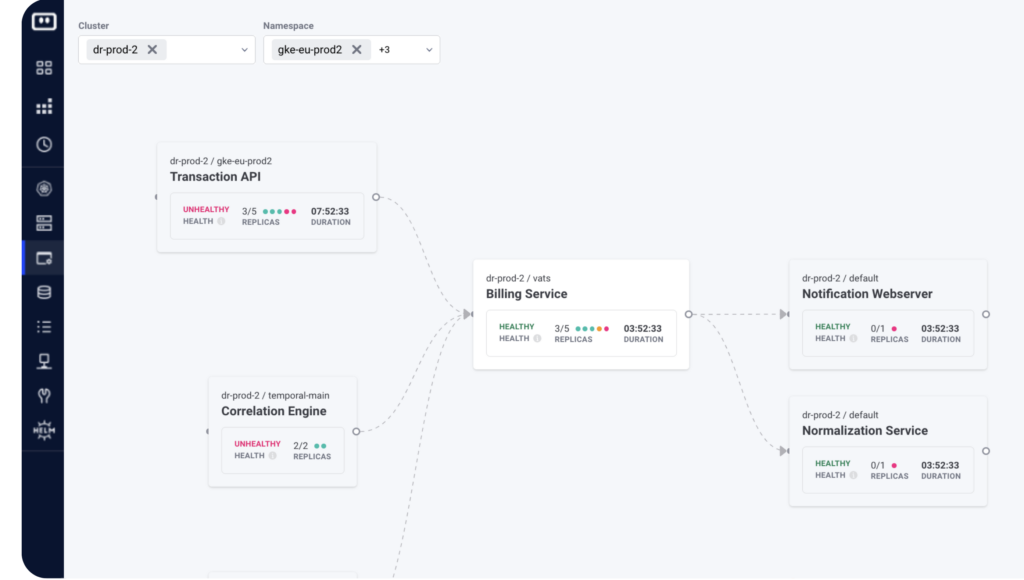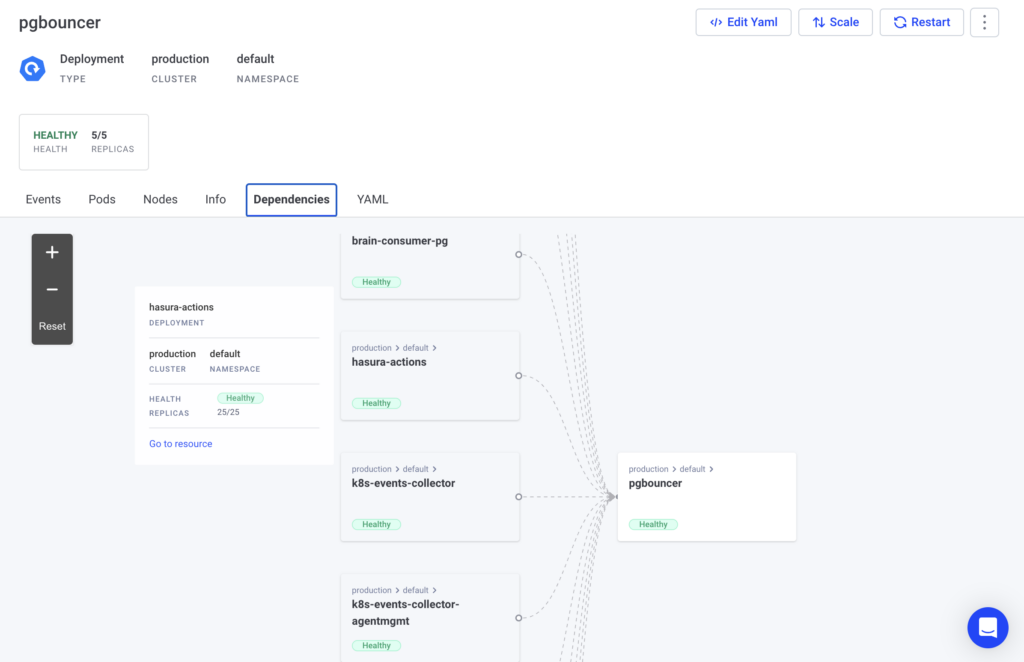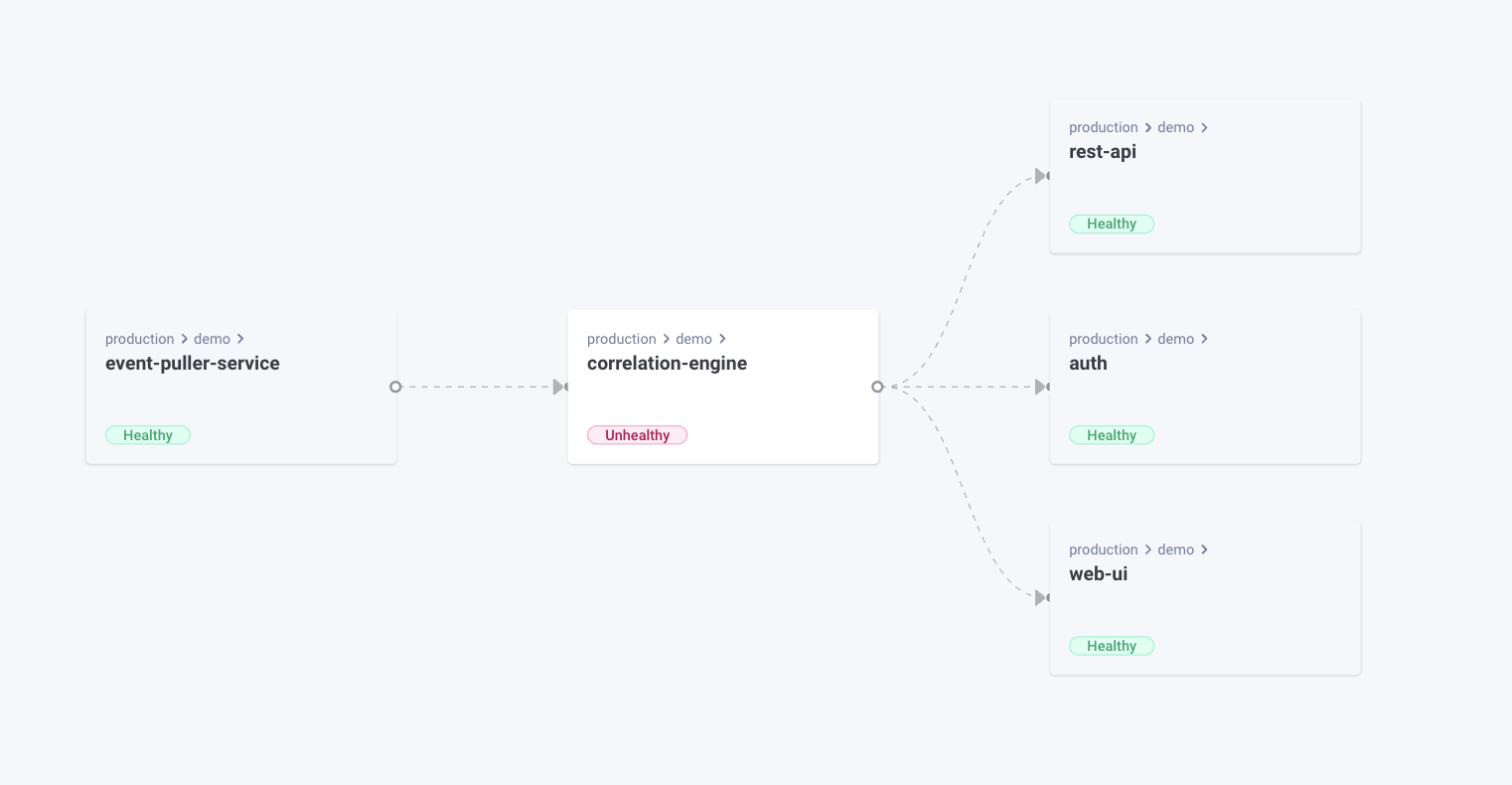Introduction
I am happy to share that thanks to the power of the open-source community, and our friends over at Otterize, we have now enhanced our Kubernetes offering for developers with another visual aid to streamline operations and troubleshooting – Dependencies Map.
The Otterize network mapper is a zero-config tool that aims to be lightweight and doesn’t require you to adapt anything in your cluster. Its goal is to give you insights into traffic in your cluster without a complete overhaul or the need to adapt anything to it.
Komodor is a Kubernetes Operation Platform explicitly designed to cater to the needs of developers. It acts as a powerful abstraction layer that streamlines Kubernetes management, empowering developers to focus on building and deploying applications without being burdened by intricate operational complexities.
Integrating Otterize’s open-source Network Mapper within Komodor is another step in enabling devs to visualize and understand how their workloads are behaving post-deployment.
Introducing Networking Mapping
Networking Mapping, the newest addition to Komodor’s feature set, provides users with a visual representation of the Kubernetes system topology. It offers a comprehensive and detailed view of the network connections and communication pathways within the cluster. By illustrating the interconnections between various components, Networking Mapping enhances developers’ understanding of the system architecture and facilitates effective troubleshooting.

By integrating the Network Map seamlessly into the Komodor platform, we’re augmenting its core functionalities. As developers encounter specific issues or anomalies in their Kubernetes environment, they can utilize the ‘Dependencies’ capability to gain valuable context surrounding the incident. This enhanced visibility empowers developers to swiftly identify the root causes of problems, leading to faster resolution and minimizing downtime.
Developer Gains
With Networking Mapping at their disposal, developers stand to benefit significantly. Firstly, the visual representation of the Kubernetes system topology enables them to grasp the complex network relationships and dependencies intuitively. This facilitates better decision-making during application deployment and scaling, reducing the likelihood of performance bottlenecks and compatibility issues.
Secondly, the ability to analyze network connections and identify failure patterns empowers developers to proactively address potential issues before they escalate. This proactive approach enhances system reliability and availability, promoting a smoother user experience for applications running on Kubernetes.

For example, even if my own services are healthy and running perfectly fine, with the help of the Network Mapper I can identify that one of my services has less than the desired number of replicas, and although it is currently healthy, it may run out of resources soon and affect other services downstream. I can then proactively notify my DevOps or SRE, reach out to the owner of the downstream service and let them know that the traffic between our services is at risk, and avoid the catastrophe of possibly learning about the issue only after it had decimated many other services.
The Power of Open-Source
The beauty of this integration goes beyond the tools themselves. It’s a testament to the strength of the open-source community. Developers, operators, and teams should gather around shared insights, tearing down silos and building bridges. Troubleshooting needs to be a collaborative effort where solutions are crowd-sourced, feedback loops are tightened, and expertise flows freely.
The magic of open source lies in its ability to unite diverse minds in a shared mission. Otterize and Komodor are products of this spirit, and their integration showcases what’s possible when innovation knows no boundaries.
Getting Started
To enable Network Mapping in Komodor, you need to upgrade to the latest version of the Komodor Agent and add the following Helm command:
helm get values k8s-watcher > /tmp/values.yaml && helm upgrade --install k8s-watcher komodorio/k8s-watcher --set watcher.networkMapper.enable=true -f /tmp/values.yamlThe new network mapper has two main components:
- Mapper – the mapper is deployed once per cluster, receives traffic information from the sniffer and watchers, and resolves the information to communications between (service identities)[/service-identities].
- Sniffer – the sniffer is deployed to each node using a DaemonSet and is responsible for capturing node-local DNS traffic and inspecting open connections.
Conclusion
In conclusion, the Network Mapping capability within Komodor is a game-changer for developers working with Kubernetes. By simplifying the understanding of system topology and enabling proactive issue resolution, Komodor empowers developers to focus on their core tasks, fostering innovation and accelerating application development within the Kubernetes ecosystem.
Learn More
Are you excited to harness the power of Otterize Network Mapper and Komodor? It’s time to roll up your sleeves and experience firsthand what enhanced visibility, contextual troubleshooting, and collaborative problem-solving can do for your Kubernetes environment. Skip the hype, embrace the functionality, and let’s go! Check out Komodor’s Dependencies Map now.
Would you like to hear more from the minds behind the products? Otterize’s Co-Founding CTO, Ori Shoshan, will join me on September 6th for a live conversation around Kubernetes, IBAC, OSS, Networking, and much more! Save your seat here.




